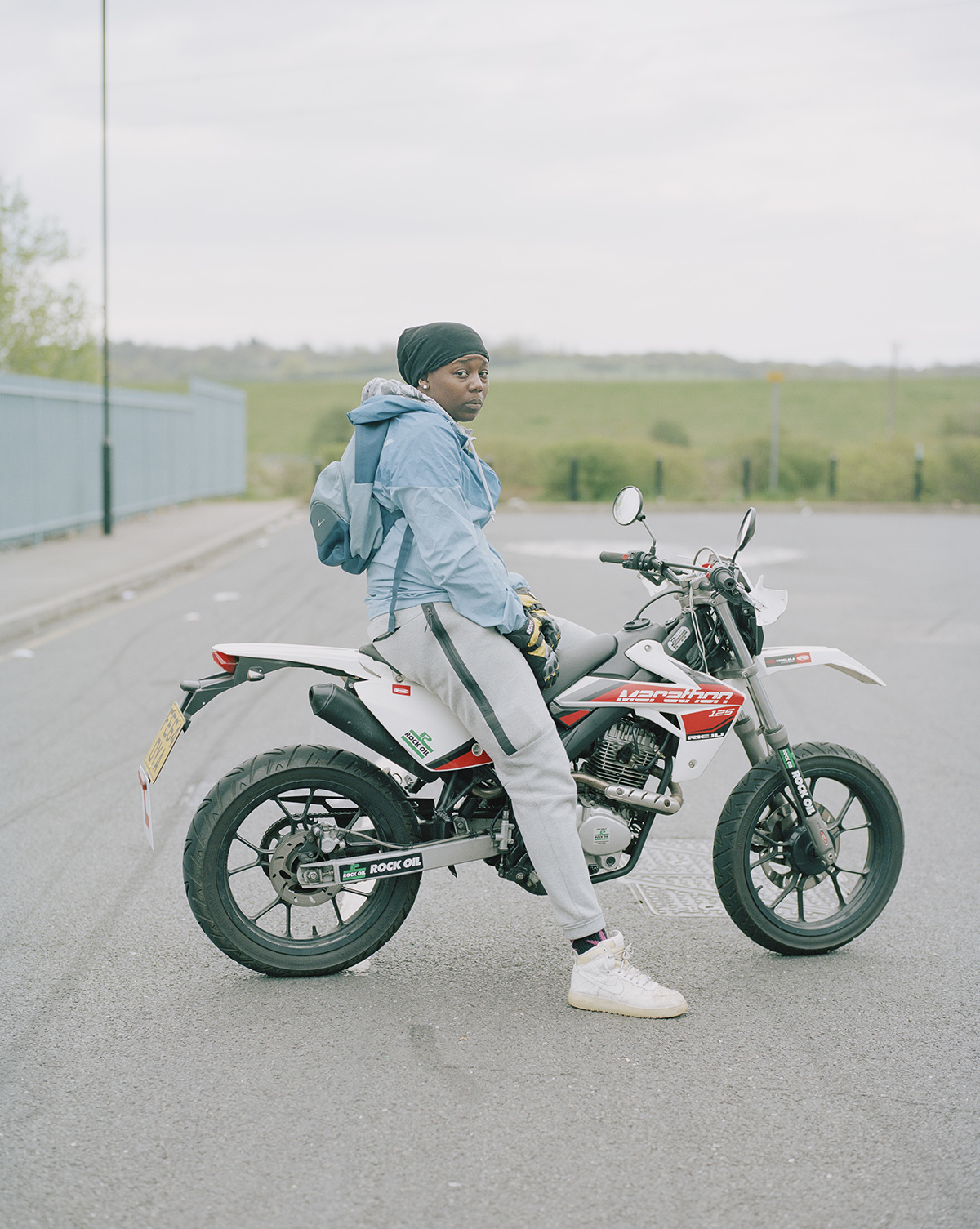Whipping down the tarmac of a vacant industrial estate on a Sunday, young biker LB Looney wears a hooded sweatshirt, puffer jacket, and Nikes with wavy moulded soles. Though he’s balanced in a 45-degree wheelie, only one hand on the bars, he’s turned calmly to face the camera with no helmet on his head. “The police can’t give chase to riders who aren’t wearing protective gear, because it could endanger their lives,” explains photographer Spencer Murphy, who shot Looney for his new book Urban Dirt Bikers (Hoxton Mini Press), “So the idea is, ‘If I don’t wear a helmet, then the police aren’t going to chase me.'”
BikeLife culture — in which teams of riders on dirt bikes, mopeds, and quad bikes get together to perform stunts in urban areas (to the dismay of the police and local residents) — took off in the UK at around the same time that Instagram did, roughly five years ago. The app was a perfect platform for sharing stunt footage and helped spread the subculture to Europe from the U.S., where the scene was already thriving.
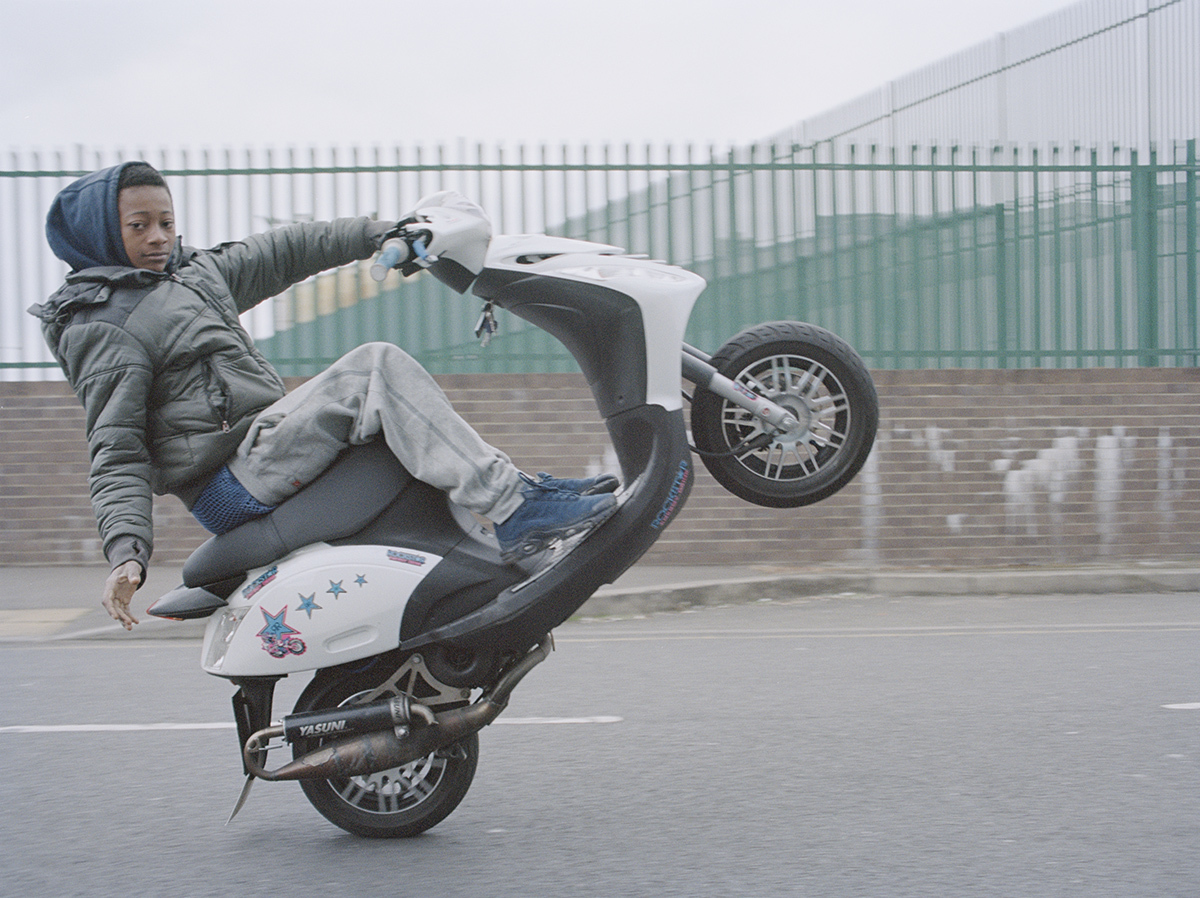
In Urban Dirt Bikers, Murphy captures the young riders who are forging this unique new culture in London’s inner-city areas. And his striking portraits of laughing friends and sunlit faces cast the frequently demonized BikeLife community in an all-new light. Murphy, a former winner of the prestigious Taylor Wessing Portrait Prize, has a history of capturing communities who live outside the mainstream, from surfers to gypsies. “People on the peripheries should be celebrated, not demonized,” he says. “We need to make room for them, and learn from them.”
What first drew you into urban dirt bike culture?
My first engagement with it was seeing 12 O’Clock Boys. It’s a documentary about the original Baltimore-based urban dirt bikers, who’ve been doing this for around 20 years. Later, I heard about communities starting to grow up in London. It’s very new in the UK, and that documentary helped its birth here. Eventually, I started seeing dirt bikers on the roads. Towards the end of 2015, I tried to start contacting bikers and had no luck. It took me months. In the end, Instagram messaging was the only way I got a response from one of the riders. A guy named Izzy, who has a group of riders called the Super Dupa Motos, invited me out. I think they were are quite suspicious of me because of the police attention.
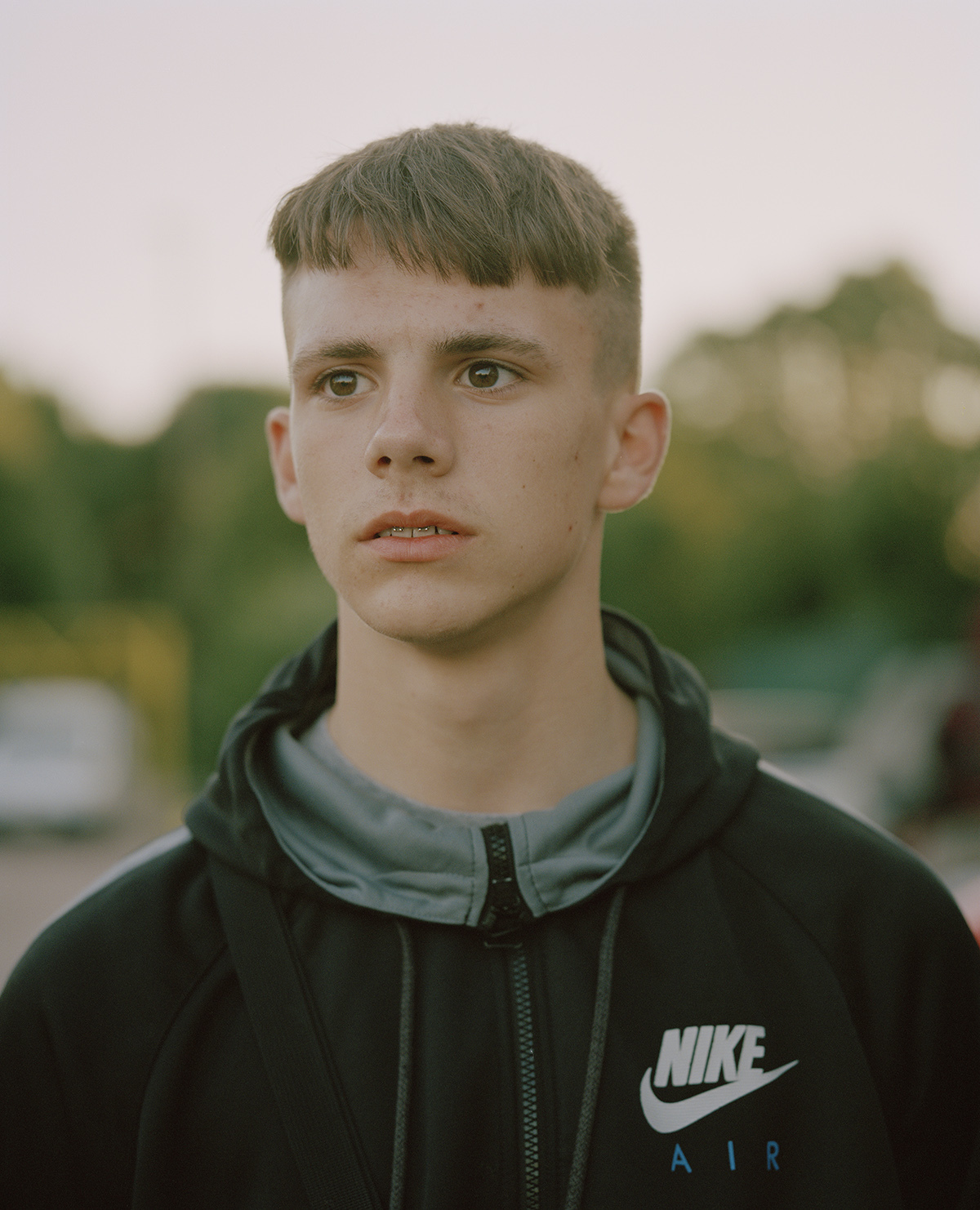
What are the demographics of the community?
It’s very male. I only met two or three women who rode during my time. The age range is really wide, from kids of around eight on pushbikes, who absolutely idolize these riders, to guys in their mid-30s. It’s mainly inner city based. Nearly all of the places where people ride are on the peripheries, in the borderlands where the city meets the countryside. The riders go out looking for these spots where the public isn’t going to get offended by what they do and the police won’t come and shut them down.
What exactly are the police trying to crack down on?
It’s a few things. Quad bikes and motorbikes are allowed on the road, but dirt bikes aren’t — and that’s the main bike the riders use. The noise is a problem, too. Also, once you pull a stunt, it becomes dangerous driving. So basically, once they’re on one wheel, it becomes illegal and they can have their bike taken away. I know of a couple of riders who’ve ended up in jail. The police film them and track the riders from their number plates. So a lot of them remove their plates and hardly any of them want their faces in photographs. They wear these masks which make them look more lawless. But it’s just to protect them, rather than to hide their identities because they’re involved in any kind of crime. In my experience, dirt bike culture actually has the opposite effect and helps get people out of that lifestyle.
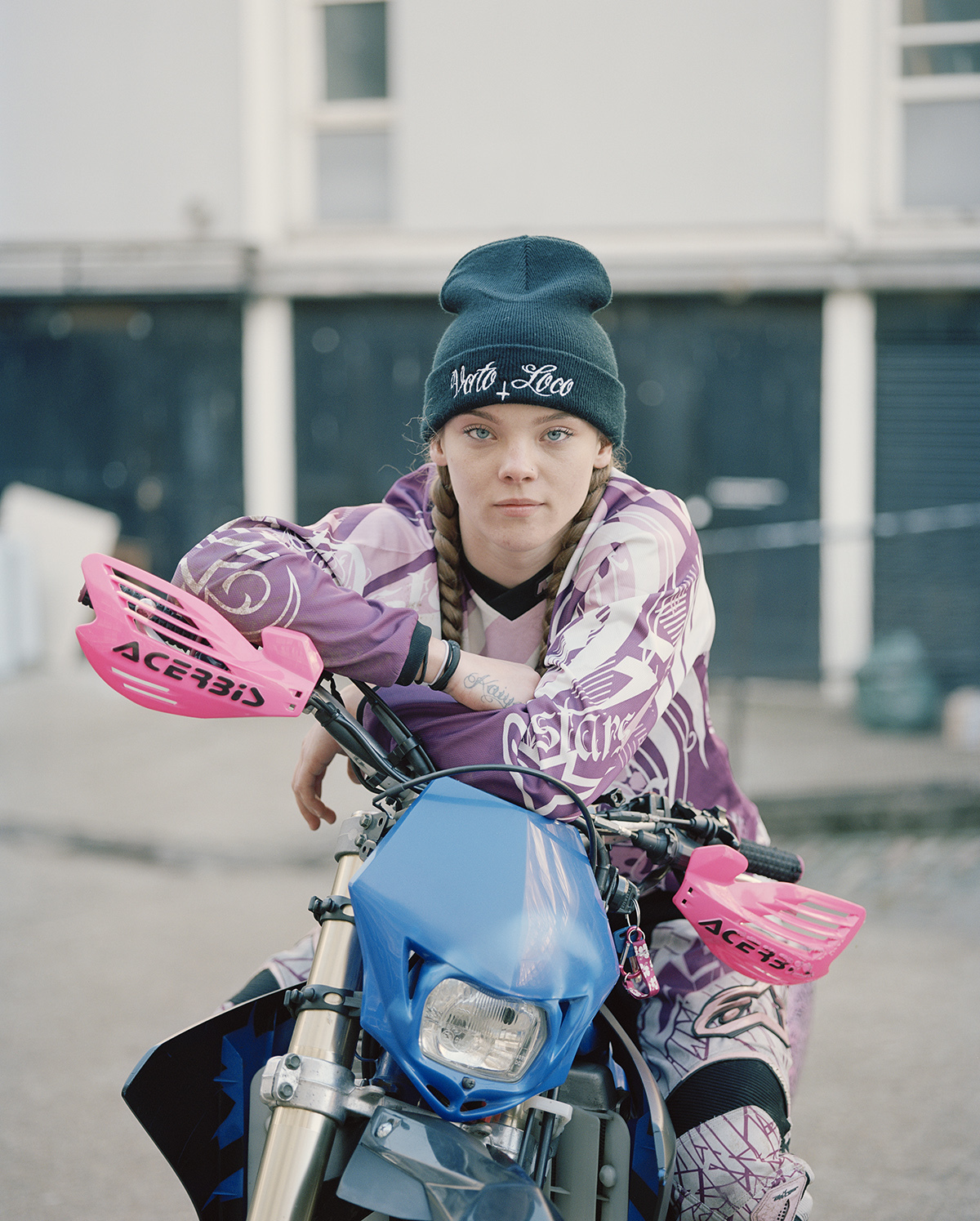
How open were riders to being photographed?
It was really difficult. At first, some people worried I was an undercover policeman trying to get into the community, or they didn’t want to be associated with it. But some of them were very cool about it. Some of the younger kids had parents who were really supportive and saw the positives in what they do, so they could show their faces. I wanted to show that there was more depth to this culture than scary characters in balaclavas and skull masks. But I also like that there is this modern-day outlaw trope.
Do the riders consider themselves outsiders?
I was really into skateboarding as a kid, and I draw a lot of parallels between urban dirt biking and that scene. The fact that skateboarding was on the fringe made me want to do it. The public didn’t like it, the authorities didn’t like it. So you were living this kind of rebel lifestyle.
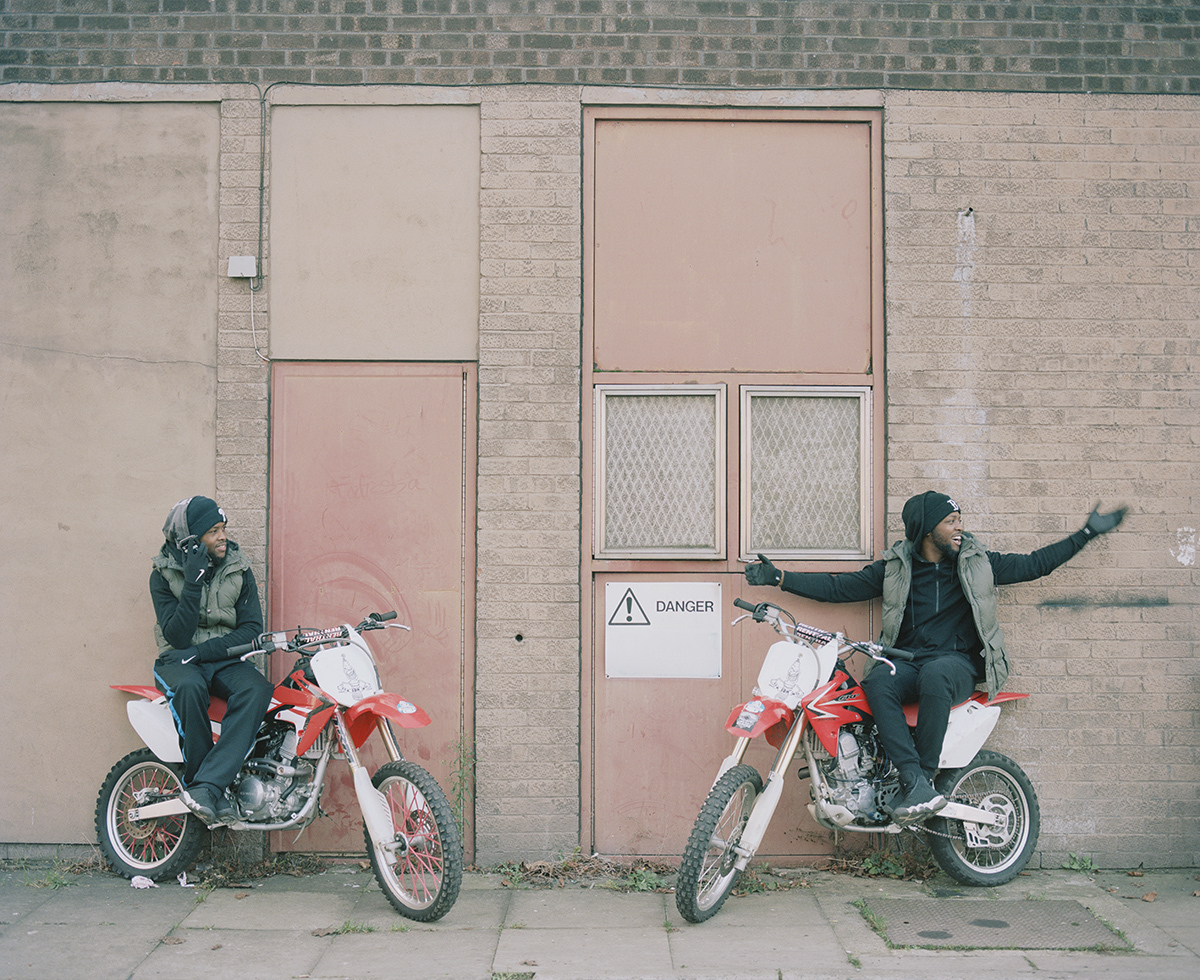
What are the other draws?
When I asked riders why they do this, most people said what people often say about dangerous sports: that it’s a relief, that no matter what’s going on at home or at work, they can get on their bike and everything else will fade into the distance. They can get on their bikes and feel free. That was a universal answer.
What happens at a meetup?
Usually, people meet up at an industrial estate, when it’s closed on the weekend. People crowd at one end of a strip, and the riders go up and down pulling tricks. Sometimes there are spectators, and the riders will often film each other from bike to bike. It’s a really social thing. In America, there are areas now where it’s semi-legal, but we don’t really have that over here yet. A lot of these guys are crying out for a legal place to ride. Others say that what they do on the meetup is just practice for going on the roads and weaving in and out of traffic. They don’t usually go out in large numbers, but the problem is just when there are accidents. It’s so easy for it to go wrong — I think that’s why the police want to intervene.
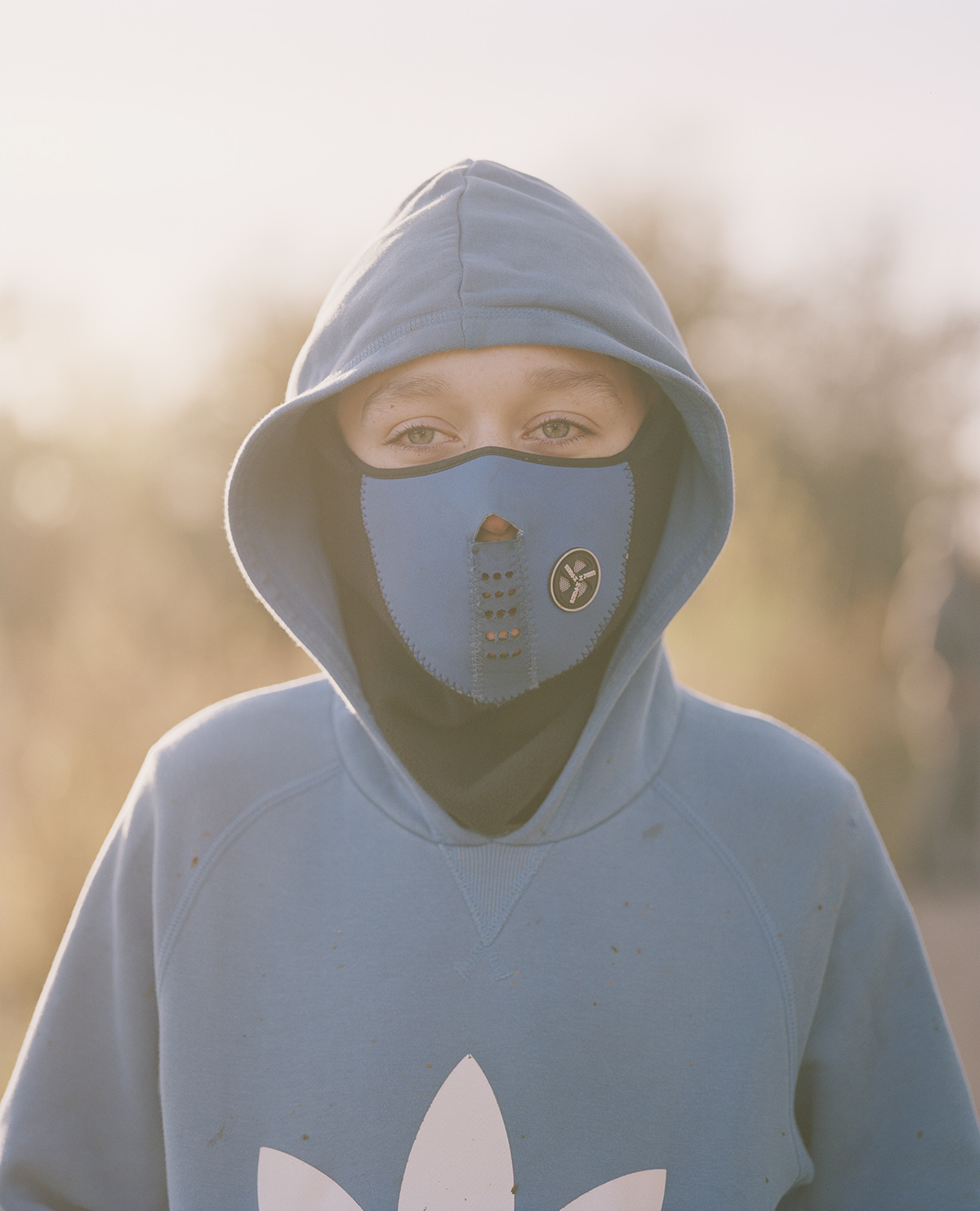
What are the most common misunderstandings about the subculture?
They’re often portrayed as gangs or bike thieves. But the only crime that they’re committing is pulling stunts. They did a big rideout last Halloween in central London — they went down Oxford Street — and there were a couple of incidents, a phone robbing, but it’s the few who spoil it for the many. That wasn’t a reflection of the community as a whole.
How much does style play a part in the culture? Is there a specific aesthetic you wanted to capture?
It’s the same as with any marginalized or solo sport, there’s always an emphasis on style. Their bikes are made to look a certain way. They wear certain clothes. I was really looking for that: people in adidas tracksuits, the skull mask, bandanas, gold teeth. There is definitely a style and I think it’s really connected to hip-hop and grime.

Your work often focuses on communities who live outside the mainstream. Did this book feel like part of the same project?
Before this book, I photographed a group of squatters who were facing eviction. I’ve shot hermits, gypsy horse fairs, and people who live off road kill. I’ve always been interested in people who live outside of what we deem the norm. It’s a theme that runs through my work. I’m interested in the space between what’s legal and what’s not, between what’s crazy and what’s not. I think that’s always a space where interesting things happen, a space where things are invented.
‘Urban Dirt Bikers’ is available for pre-sale now through Hoxton Mini Press.
hoxtonminipress.com
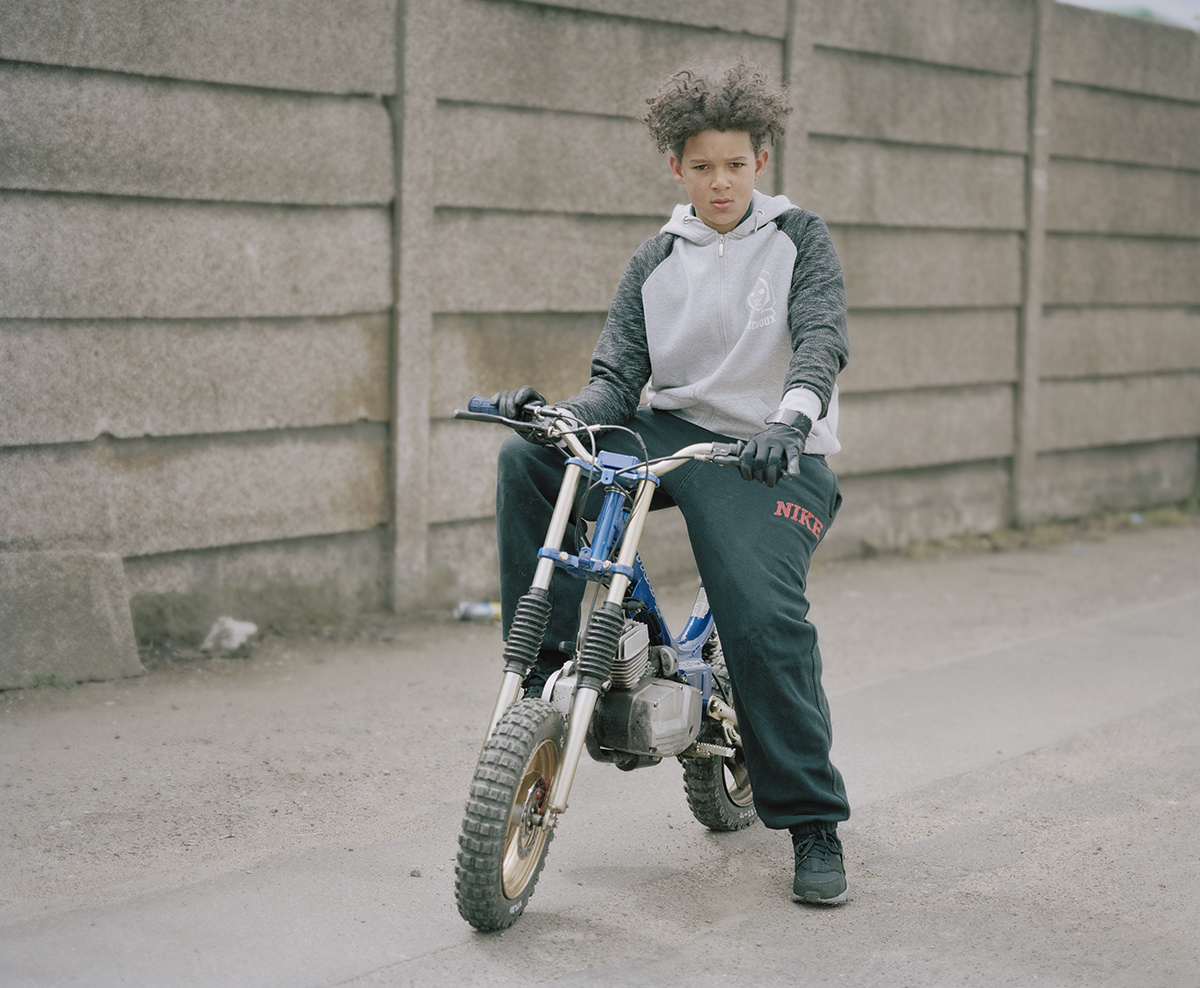
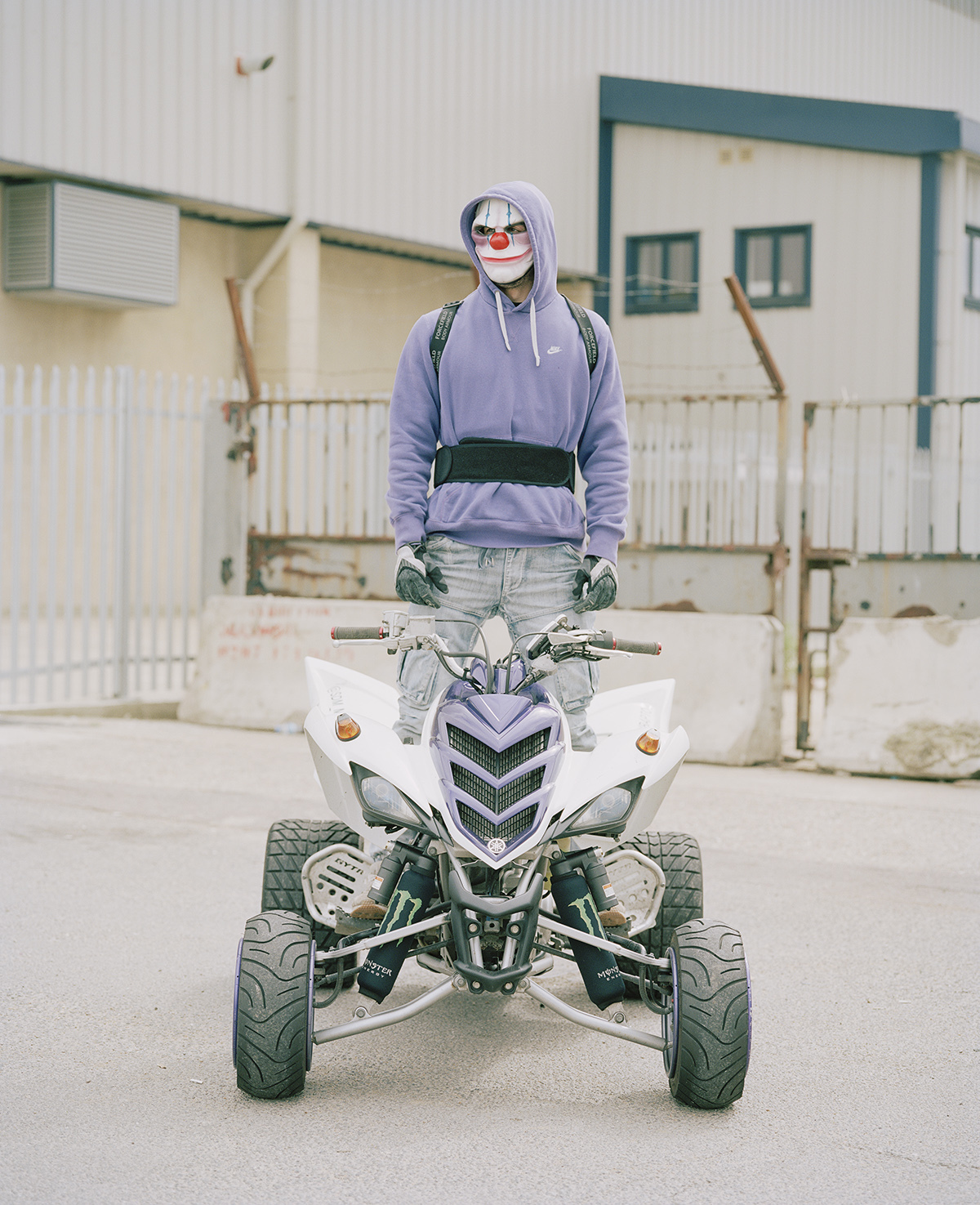
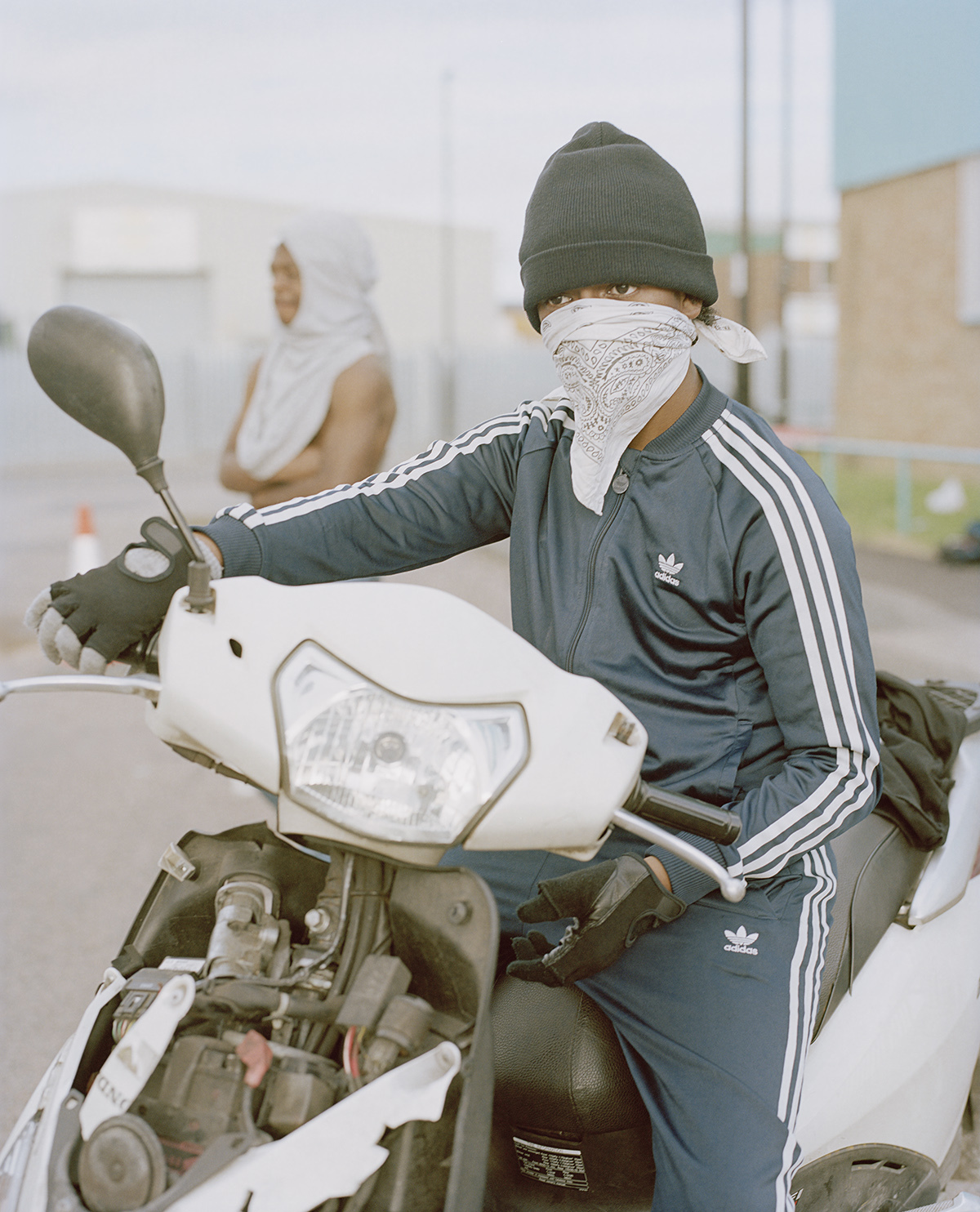
Credits
Text Alice Newell-Hanson
Photography Spencer Murphy
